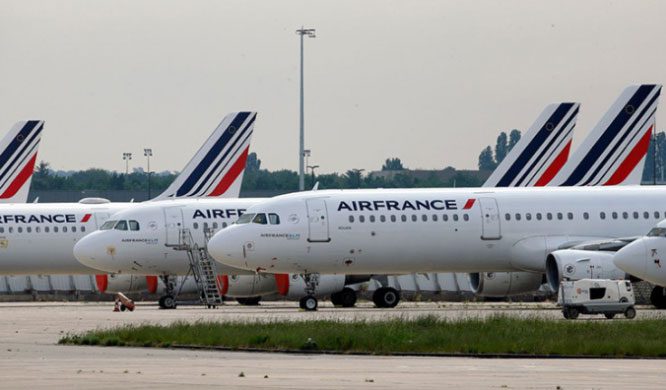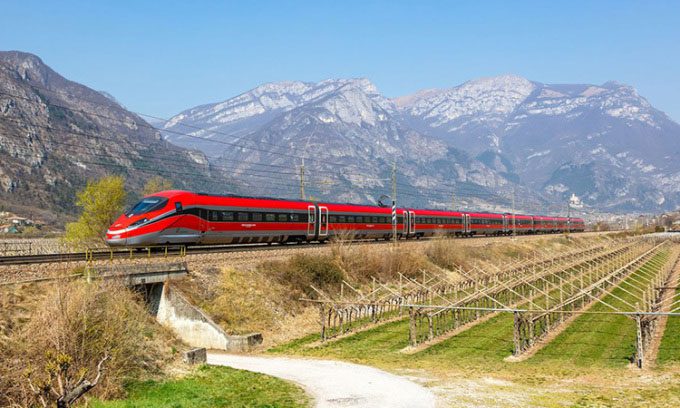European countries are seeking to limit short-haul flights, replacing them with train travel to actively reduce carbon emissions.
The aviation industry currently accounts for approximately 2.5% of global carbon emissions, but its total contribution to climate change is estimated to be higher due to other gases, water vapor, and contrails emitted by aircraft.

France’s new ban only eliminates 3 flight routes – all from Paris Orly Airport. (Photo: Chesnot/Getty).
With the movement of “Flight Shame,” many European passengers are turning to the rail network instead of short-haul flights. This movement encourages travelers to seek more environmentally friendly transportation solutions rather than relying on fuel-intensive flights that produce large amounts of emissions.
Despite some progress, the transition from aviation to rail appears to be quite challenging, and airports are unlikely to become less busy in the near future.
In December 2022, the European Commission (EC) approved France’s ban on flights between Paris Orly Airport and the cities of Nantes, Lyon, and Bordeaux. If, after three years, this measure is deemed successful, additional flight routes may be banned.
To implement the ban, the EU requires that there must be a high-speed rail alternative, allowing passengers to travel between the two cities in less than 2.5 hours. Additionally, there must be sufficient early and late train services to ensure passengers can spend at least 8 hours at their destination.
As a result, only 3 flight routes connecting Paris Orly Airport with the cities of Nantes, Lyon, and Bordeaux have been eliminated. In fact, the EC’s regulations have narrowed France’s original plan. Initially, an additional 5 flight routes were to be eliminated: from Charles de Gaulle Airport (Paris) to Bordeaux, Nantes, Lyon, Rennes, and from Lyon to Marseille.
“The ban on flights in France is a symbolic action that will have very little impact on reducing emissions,” said Jo Dardenne, aviation director of the Transport & Environment (T&E) project group.
T&E estimates that the 3 routes impacted by the ban account for only 0.3% of the emissions generated by flights departing from France and 3% of emissions from domestic flights within the country. If the additional 5 routes France intended to include were factored in, these figures would rise to 0.5% and 5%, respectively.

Frecciarossa high-speed train in Italy. (Photo: Markus Mainka/Adobe Stock)
France is not the first European country to take a firm stance against short-haul flights. In 2020, Austria provided a bailout for its national airline, Austrian Airlines, on the condition that it eliminate all flights where the rail journey takes less than 3 hours.
In reality, only the Vienna – Salzburg route was cut, and train services on this route were increased to meet demand. A similar short route, Vienna – Linz, has been switched to rail since 2017. That same year, Austria also introduced a tax of $32 on all flights under 350 km departing from its airports.
Other European countries are also considering restricting short-haul commercial flights. Spain plans to cut flights where the rail journey takes less than 2.5 hours by 2050. Additionally, 62% of Europeans surveyed in 2020 supported a ban on short-haul flights.
According to a 2022 report from the European Regions Airline Association (ERA) and other aerospace organizations, if all flights under 500 km were switched to another form of public transportation, the total carbon reduction could account for up to 5% of emissions in the European Union (EU).
The high prices and low frequency of trains remain a barrier to attracting more people to abandon flying—especially on key routes such as from Paris to Amsterdam, Frankfurt, and Barcelona, according to Jon Worth, founder of the group Trains for Europe.
Worth noted that enhancing connections between airports and intercity rail lines would help reduce demand for short flights. Additionally, providing integrated tickets is essential; for example, if a train is delayed, passengers should be transferred to the next available service.
However, long-haul flights remain significant contributors to emissions. A study published in the journal Transport Geography late last year found that flights under 500 km accounted for 27.9% of departures from the EU but only 5.9% of fuel burned. In contrast, flights longer than 4,000 km accounted for just 6.2% of departures from the EU but consumed up to 47% of fuel.



















































